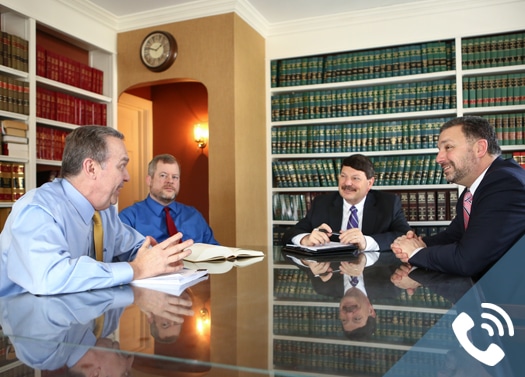Understanding Traffic Laws: Do Pedestrians Have the Right of Way?
Last updated Monday, November 18th, 2024

Navigating the roads as a pedestrian brings up an important legal question: do pedestrians have the right of way? The answer isn’t a simple yes or no. While pedestrians often hold this right—particularly in crosswalks—they must also adhere to traffic laws and signals. This article delves into the specifics of when and where pedestrians have the right of way and the responsibilities shared by both walkers and drivers to ensure mutual safety on the street.
Key Takeaways
- Pedestrians must obey traffic signals and signs and yield to vehicles when crossing unsafely or illegally, but they may have absolute right-of-way in specific situations, such as in the case of blind individuals with a guide dog or white cane.
- Drivers have a legal obligation to yield right of way to pedestrians at crosswalks and intersections, and failure to do so can lead to fines, citations, or criminal charges.
- Fault in pedestrian-vehicle accidents is determined by investigating both pedestrian actions and driver behaviors, with comparative negligence potentially reducing compensation for injured pedestrians based on their share of fault.

Get Your FREE Case Review,
In Person or Virtually Online
Pedestrian Rights and Responsibilities
You may have heard that pedestrians always have the right of way, but is that always the case? Not necessarily. While the right-of-way refers to a pedestrian’s legal right to proceed before others with precedence when the circumstances are appropriate, it’s not a blanket rule. Pedestrians are required to cross streets safely, obeying general traffic laws such as traffic signals or signs at intersections.
Pedestrians must yield the right-of-way to vehicles when it would be dangerous or illegal not to do so, such as when entering the road carelessly or disrupting the flow of traffic. Promoting safety and harmony on our public roads comes from understanding and respecting these laws.
Traffic Control Devices and Pedestrians
Traffic control devices, such as traffic control signals, at signalized intersections are not just for motorists. Pedestrians also must comply with these devices, including traffic lights and traffic signals, to ensure safety and order on the roads. For example, in Connecticut, drivers are permitted to make a right turn on red unless otherwise indicated by a sign. This requires pedestrians to be cautious even when they have the walk signal, as it indicates their right of way.
Furthermore, detectable warning surfaces alert visually impaired pedestrians that they are entering a roadway, thereby enhancing pedestrian safety at street boundaries.
Crossing Safely: Marked vs. Unmarked Crosswalks
While crossing the street may seem simple, using the right spaces is critical. In Connecticut, a ‘crosswalk’ is defined as the part of the road with distinct markings for pedestrians and no ‘no crossing’ sign. A marked crosswalk designates a safe area for pedestrians to cross the street. Both marked and unmarked crosswalks should be clearly marked and perpendicular to roadways to assist visually impaired pedestrians with proper crossing alignment. It is essential to be aware of marked or unmarked crosswalks when navigating through city streets, as well as the presence of an unmarked crosswalk.
Median refuge islands provide safer pedestrian crossing by allowing pedestrians to navigate fewer lanes of traffic at a time and should include detectable warnings. However, pedestrians should also be wary of vehicles turning at intersections, as drivers may only look for oncoming traffic and fail to notice pedestrians crossing.
The Dangers of Jaywalking
It’s tempting to take a shortcut and cross the street wherever it’s convenient, but this act, known as jaywalking, is not only illegal but also dangerous. Jaywalkers do not have the right of way and put themselves at greater risk due to their unexpected presence on the road. Suddenly venturing into the path of a vehicle is dangerous as pedestrians should not assume that drivers will see them or yield right of way.
Remember, your safety is paramount, and to obey traffic laws is a significant step towards ensuring it.

Get Your FREE Case Review,
In Person or Virtually Online
Driver Obligations and Liability
Drivers also have a significant role to play in ensuring pedestrian safety. They should always act to avoid hitting a pedestrian, regardless of the right of way.
At intersections with stop signs, drivers should come to a full stop at the marked line and yield the right-of-way as necessary. In areas with a likely presence of children, such as around schools or school buses, drivers should be particularly attentive for pedestrians crossing.
Yielding to Pedestrians at Crosswalks and Intersections
When it comes to crosswalks and intersections, drivers are legally bound to yield the right of way to pedestrians. This obligation also extends to non-signalized intersections where drivers must slow down or stop to allow pedestrians to cross safely.
Failure to comply with these rules can result in fines, citations, or even criminal charges for the driver.
Sharing the Road: Bicyclists, Scooters, and Other Non-Pedestrians
Roads are not just for cars and pedestrians. Bicyclists and scooter riders also share the road and must adhere to the same traffic laws that govern vehicular traffic. This includes:
- Traveling in the direction of the flow of traffic
- Using designated bike lanes rather than sidewalks
- Utilizing hand signals and voice for signals
- Ensuring they are properly visible to others, using reflectors or lights especially during times of low light
However, bear in mind that non-pedestrians like bicyclists and scooter riders at four-way stops don’t automatically have the right of way over other vehicles.
Special Considerations for Blind Pedestrians
When it comes to blind pedestrians, the rules are clear. In Connecticut, blind pedestrians who are carrying a white cane or guided by a guide dog are granted the absolute right-of-way. Elderly and disabled pedestrians, including the blind, face increased risks at crosswalks, especially if drivers fail to yield appropriately.
This highlights a broader responsibility towards pedestrians with visual impairments and mandates motorists to take necessary precautions to ensure their safety.
Determining Fault in Pedestrian-Vehicle Accidents
Determining who’s at fault in pedestrian-vehicle accidents isn’t always straightforward. Fault is determined by assessing behaviors and potential traffic law violations from both the driver and the pedestrian. Determining fault heavily relies on investigations, which involve analyzing evidence like pedestrian actions, including jaywalking or crossing against signals, and police reports documenting the scene.
Even with partial responsibility, drivers may be found primarily at fault, affecting negotiations with insurance adjusters and potentially leading to mediation, arbitration, or lawsuits if liability is disputed.
Gathering Evidence and Witness Testimonies
Evidence is the cornerstone of any legal case, and pedestrian accidents are no exception. After an accident, gathering the following information is imperative to building a substantial evidence base:
- Names, phone numbers, and addresses of witnesses
- Driver’s details
- Insurance information
- Photos and videos of the accident scene
Attorneys play a key role in the collection of evidence such as gathering witness statements alongside accident scene photos or videos to support a liability claim in a pedestrian accident.
Comparative Negligence and Shared Fault
Sometimes, both parties share some blame for an accident. This is where the concept of comparative negligence comes in. It apportions blame for an accident between the parties involved and depending on the state’s rules, the percentage of fault can affect the compensation the injured party receives.
Pedestrians do not always have the right of way, especially in situations where they did not obey traffic and crosswalk laws, were intoxicated, or were in areas where pedestrians were not supposed to be, which could lead to a pedestrian injured.

Get Your FREE Case Review,
In Person or Virtually Online
Seeking Compensation for Injuries and Losses

- Medical expenses
- Funeral costs
- Lost future income
- Pain and suffering
- Loss of love, care, and companionship
To seek compensation after an accident, pedestrians must establish the negligence of the other party involved, and a pedestrian accident attorney can assist with this process. However, compensation can be affected by the pedestrian’s share of fault, with the potential for reduced recovery amounts or no recovery if the pedestrian’s fault reaches a certain percentage.
In certain cases, pedestrians may be awarded punitive damages in addition to other compensations if the incident involved gross negligence or intentional harm by the other party.
Medical Expenses and Lost Wages
The economic impact of a pedestrian accident can be significant. Economic damages for pedestrian accidents can include the cost of rehabilitation, medical devices, and various out-of-pocket expenses. These costs can quickly add up, making the recovery process even more challenging.
Pain and Suffering, Emotional Distress, and Wrongful Death
In addition to physical injuries, pedestrian accidents can also lead to psychological trauma. Non-economic damages in pedestrian accidents are assessed using a multiplier method that amplifies the total economic damages to reflect intangible losses, including emotional distress.
In circumstances where a pedestrian accident results in fatality, a wrongful death claim can be pursued.
The Role of Personal Injury Attorneys in Pedestrian Accidents
Navigating the aftermath of a pedestrian accident can be complex and stressful. That’s where personal injury attorneys come in. These legal professionals:
- Apply their specialized knowledge of pedestrian accident laws to evaluate an accident case meticulously
- Utilize this expertise to lay out a strong defense
- Adeptly negotiate with insurance companies
- Ensure that responsible parties are held accountable
- Ensure that victims receive the full extent of damages they are entitled to
Knowing the statutory deadlines is key when filing pedestrian accident claims. Legal professionals guide clients through this process to prevent missing out on potential compensation.
Frequently Asked Questions
Do pedestrians always have the right of way?
No, pedestrians do not always have the right of way. They must also obey traffic laws and signs to ensure safety and avoid penalties.
What obligations do drivers have towards pedestrians?
Drivers are obligated to yield the right of way to pedestrians, particularly at crosswalks and intersections, and take extra care in areas where children are likely to be present. Always prioritize the safety of pedestrians while driving.
What can a pedestrian do if they're injured in an accident?
If you’re injured in an accident as a pedestrian, you can seek compensation for medical expenses, lost wages, and pain and suffering with the assistance of a personal injury attorney. It’s important to take the necessary legal steps to protect your rights.
How is fault determined in pedestrian-vehicle accidents?
Fault in pedestrian-vehicle accidents is determined by assessing behaviors and potential traffic law violations from both the driver and the pedestrian, with investigations and evidence collection playing a crucial role in this process.
What role do personal injury attorneys play in pedestrian accidents?
Personal injury attorneys play a crucial role in pedestrian accidents by utilizing their expertise to assess cases, negotiate with insurance companies, and ensure that responsible parties are held accountable. Ultimately, they help victims obtain the rightful compensation for their damages.

